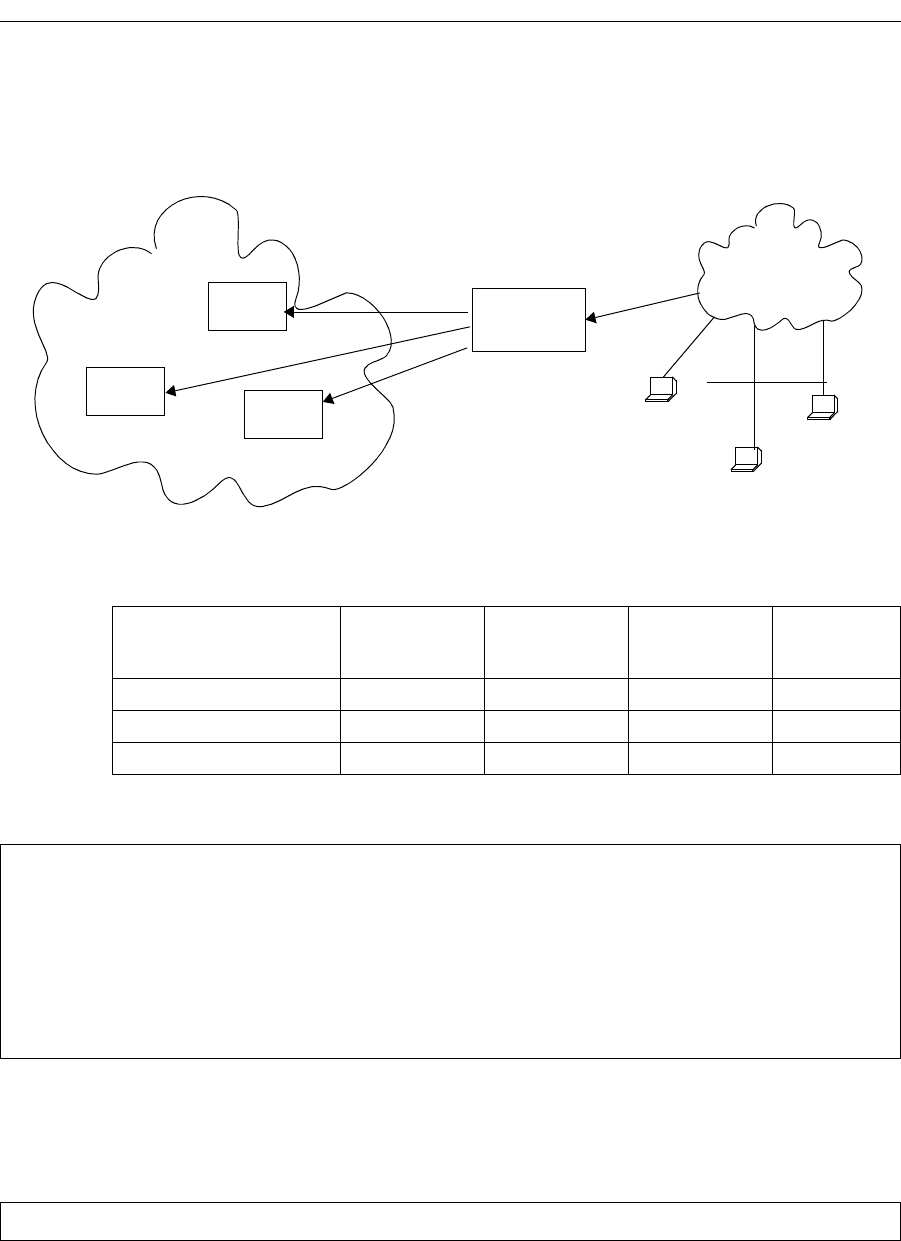Network Router User Manual
Table Of Contents
- Notices
- Contents
- About This Manual
- Introduction
- Hot Swapping Line Cards and Control Modules
- Bridging Configuration Guide
- Bridging Overview
- VLAN Overview
- Configuring SSR Bridging Functions
- Monitoring Bridging
- Configuration Examples
- SmartTRUNK Configuration Guide
- ATM Configuration Guide
- Packet-over-SONET Configuration Guide
- DHCP Configuration Guide
- IP Routing Configuration Guide
- IP Routing Protocols
- Configuring IP Interfaces and Parameters
- Configuring IP Interfaces to Ports
- Configuring IP Interfaces for a VLAN
- Specifying Ethernet Encapsulation Method
- Configuring Jumbo Frames
- Configuring Address Resolution Protocol (ARP)
- Configuring Reverse Address Resolution Protocol (RARP)
- Configuring DNS Parameters
- Configuring IP Services (ICMP)
- Configuring IP Helper
- Configuring Direct Broadcast
- Configuring Denial of Service (DOS)
- Monitoring IP Parameters
- Configuring Router Discovery
- Configuration Examples
- VRRP Configuration Guide
- RIP Configuration Guide
- OSPF Configuration Guide
- BGP Configuration Guide
- Routing Policy Configuration Guide
- Route Import and Export Policy Overview
- Configuring Simple Routing Policies
- Configuring Advanced Routing Policies
- Multicast Routing Configuration Guide
- IP Policy-Based Forwarding Configuration Guide
- Network Address Translation Configuration Guide
- Web Hosting Configuration Guide
- Overview
- Load Balancing
- Web Caching
- IPX Routing Configuration Guide
- Access Control List Configuration Guide
- Security Configuration Guide
- QoS Configuration Guide
- Performance Monitoring Guide
- RMON Configuration Guide
- LFAP Configuration Guide
- WAN Configuration Guide
- WAN Overview
- Frame Relay Overview
- Configuring Frame Relay Interfaces for the SSR
- Monitoring Frame Relay WAN Ports
- Frame Relay Port Configuration
- Point-to-Point Protocol (PPP) Overview
- Configuring PPP Interfaces
- Monitoring PPP WAN Ports
- PPP Port Configuration
- WAN Configuration Examples
- New Features Supported on Line Cards

SmartSwitch Router User Reference Manual 241
Chapter 17: Web Hosting Configuration Guide
Web Hosting with Multiple Virtual Groups and Multiple Destination Servers
In the following example, three different servers are used to provide different services for
a site.
The network shown above can be created with the following load-balance commands:
If no application verification options are specified, the SSR will do a simple TCP
handshake to check that the application is “up.” Some applications require specific
commands for proper closure of the connection. The following command shows an
example of how to send a specific string to close a connection on a server:
10.1.1.1
Router
Internet
Web requests
forwarded to
the server
www.quick.com
ftp.quick.com
User Queries:
www.quick.com
10.1.1.3
smtp.quick.com
10.1.1.2
ftp.quick.com
smtp.quick.com
Domain Name Virtual IP TCP Port
Real Server
IP
TCP Port
www.quick.com 207.135.89.16 80 10.1.1.1 80
ftp.quick..com 207.135.89.16 21 10.1.1.2 21
smtp.quick.com 207.135.89.16 25 10.1.1.3 25
load-balance create group-name quick-www virtual-ip 207.135.89.16 virtual-port 80
protocol tcp
load-balance create group-name quick-ftp virtual-ip 207.135.89.16 virtual-port 21
protocol tcp
load-balance create group-name quick-smtp virtual-ip 207.135.89.16 virtual-port
25 protocol tcp
load-balance add host-to-group 10.1.1.1 group-name quick-www port 80
load-balance add host-to-group 10.1.1.2 group-name quick-ftp port 21
load-balance add host-to-group 10.1.1.3 group-name quick-smtp port 25
load-balance set group-options quick-smtp acv-quit “quit”










